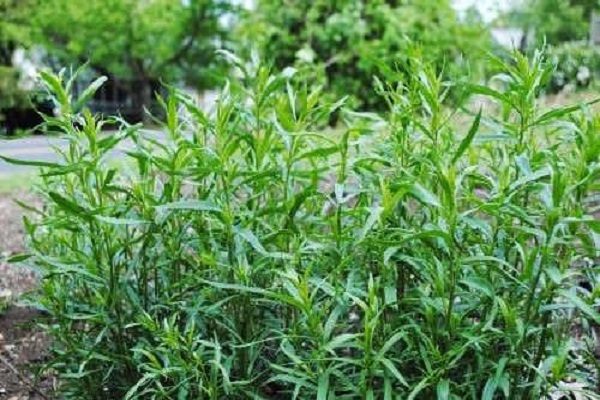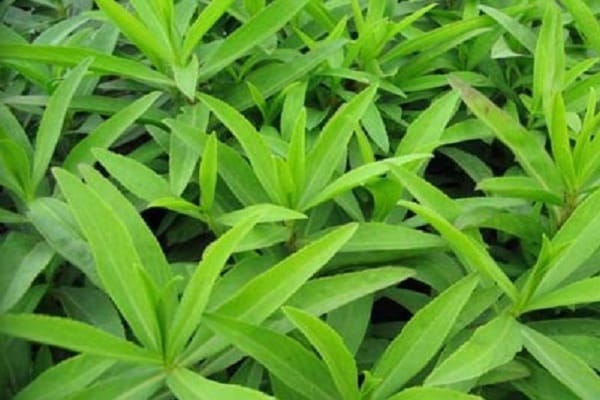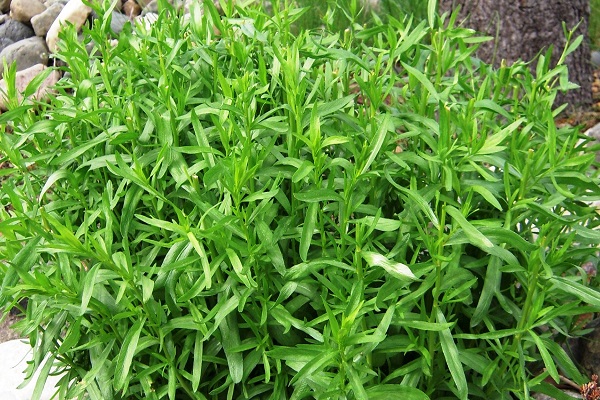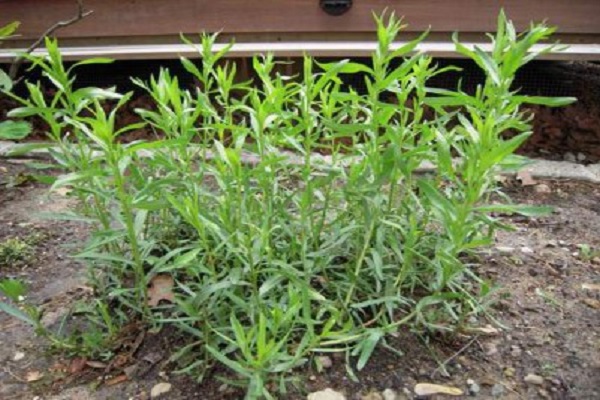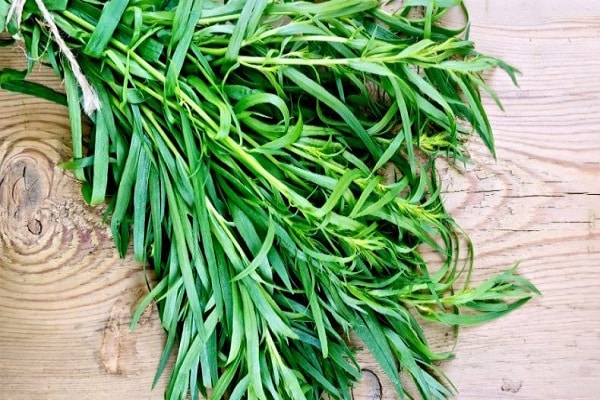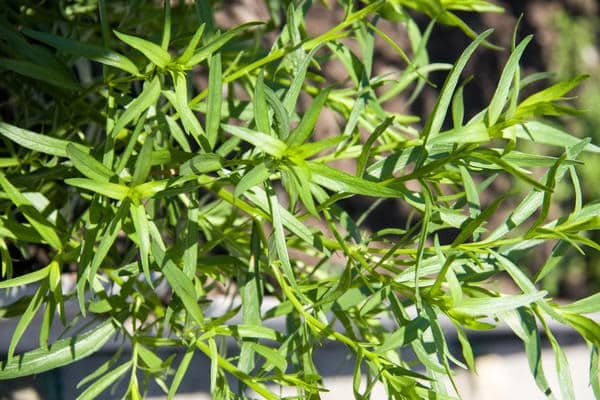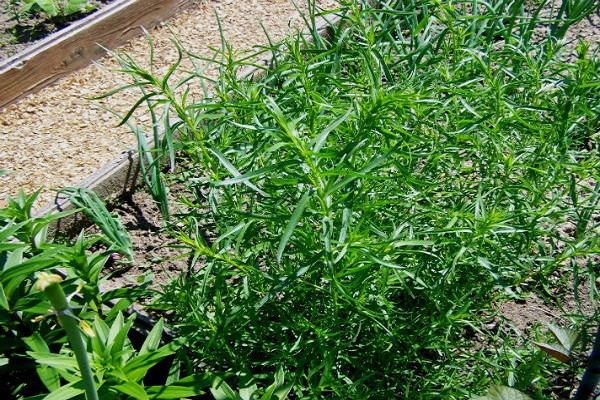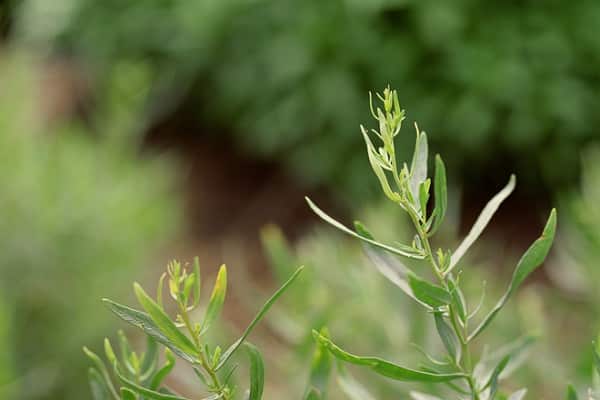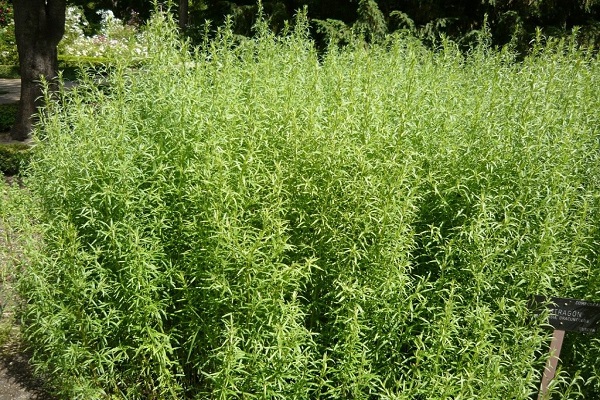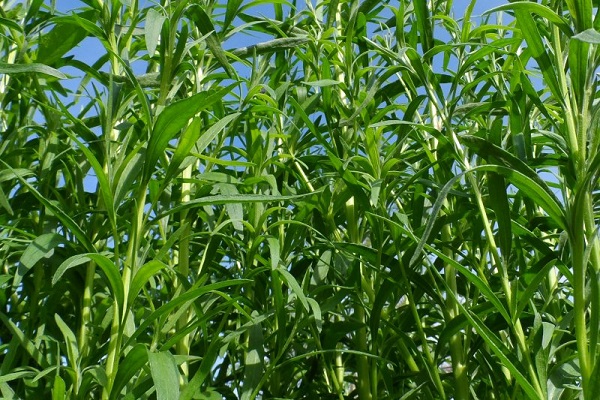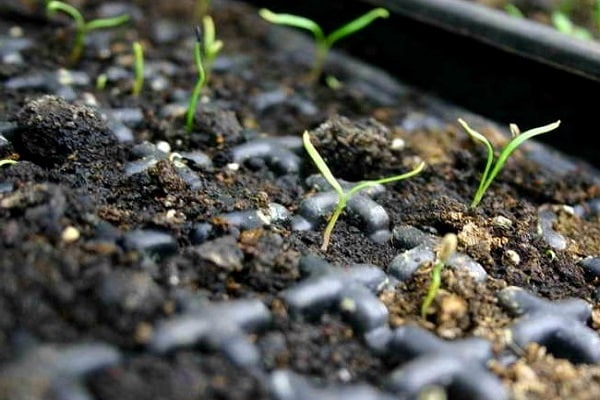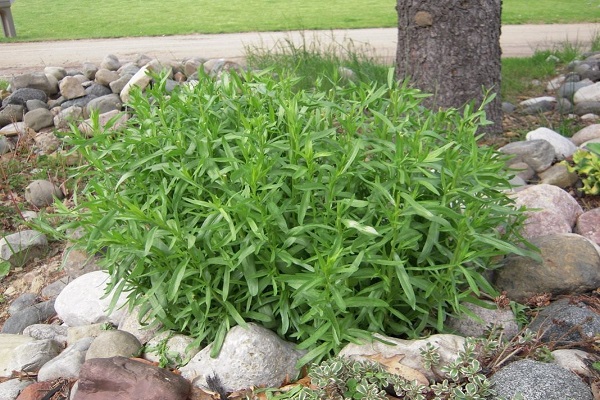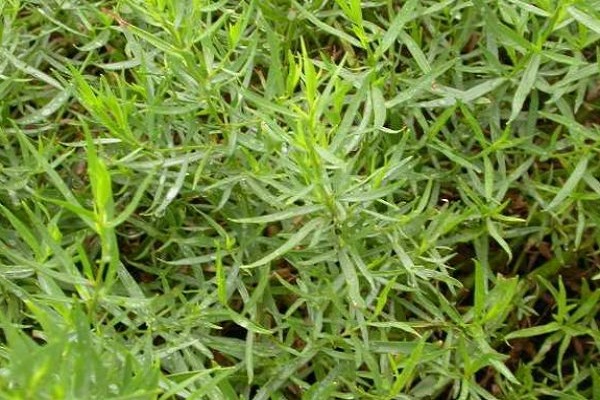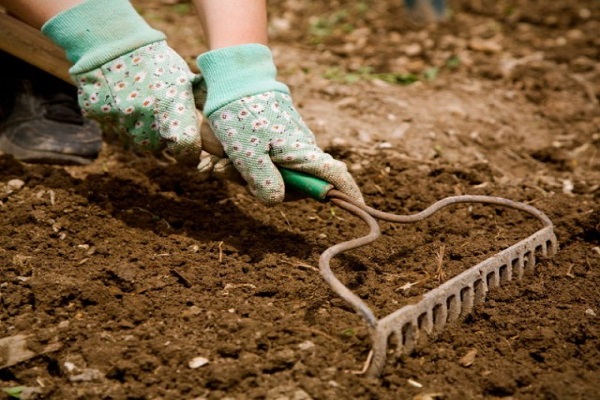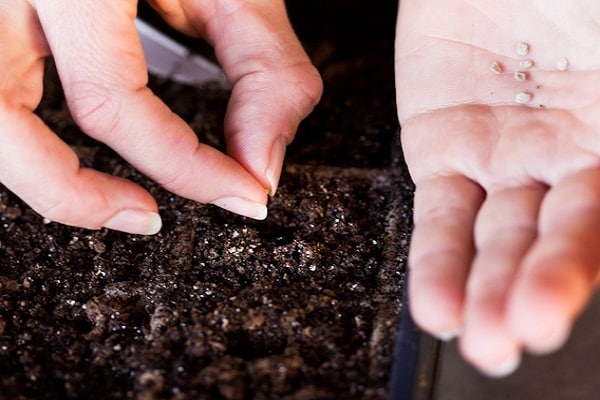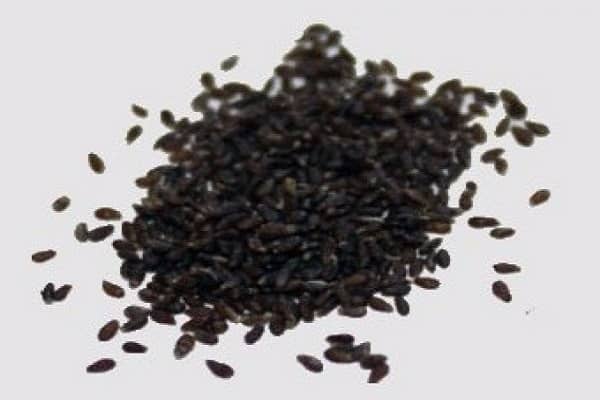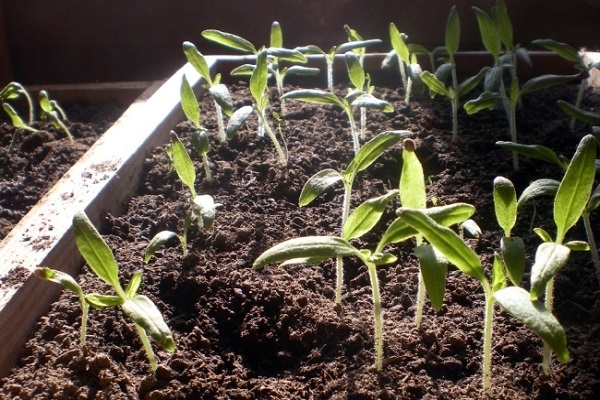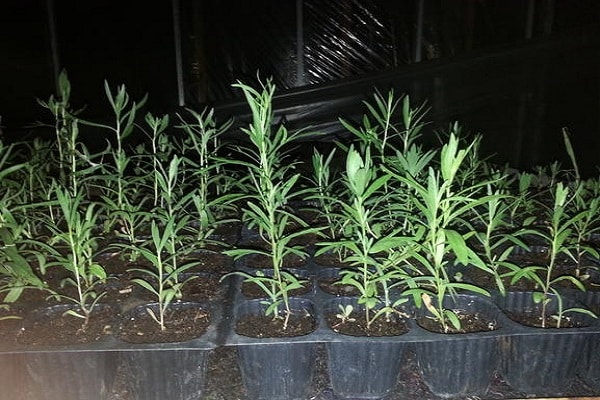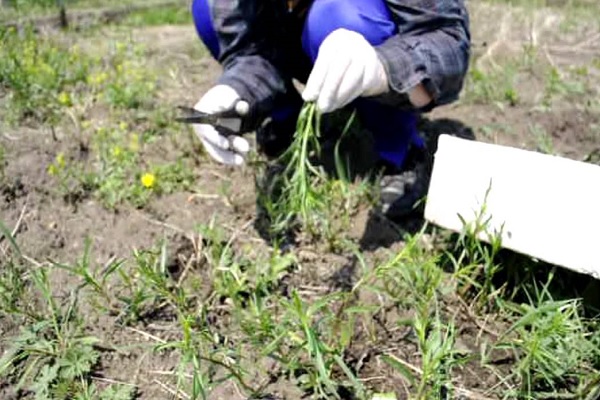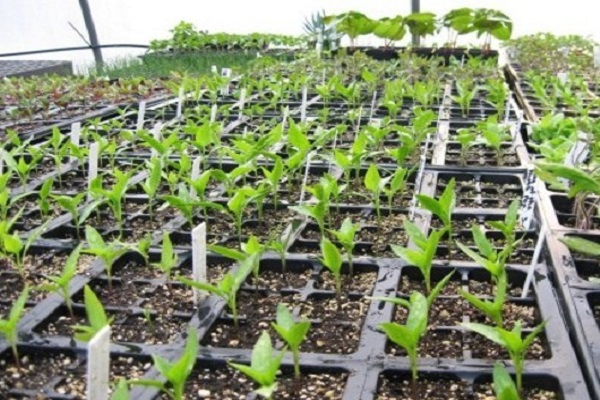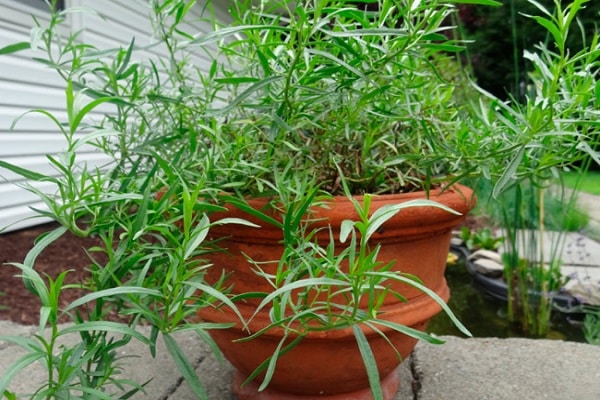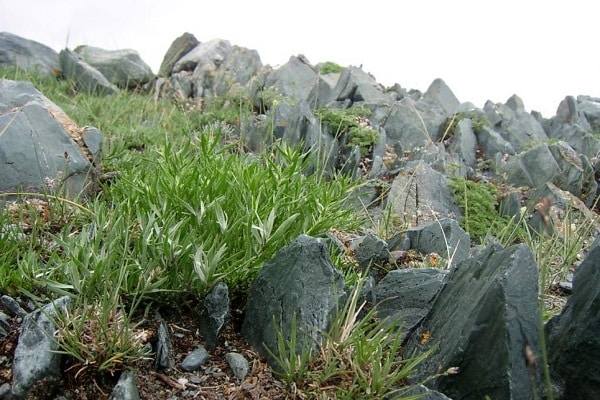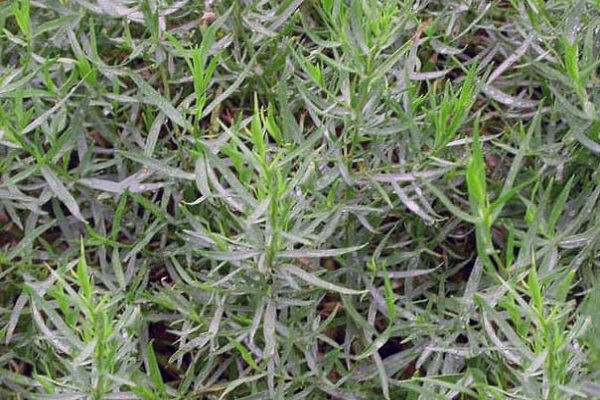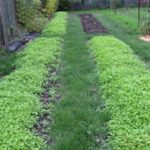Modern gardeners are engaged in growing various crops, as well as vegetables and fruits. However, some of them produce useful herbs and shrubs on their plots. One of the varieties of useful plants is the herb tarragon; its planting will be discussed here in detail, as well as subsequent care and use of the nutritional composition, which many associate with green sparkling water.
- Brief description of tarragon
- Which varieties to choose
- Reproduction methods
- Dividing the bush
- Cuttings
- Germination of seeds
- Planting dates
- Growing tarragon with seeds in open ground
- Environmental requirements of tarragon
- Preparing the site for planting
- Sowing tarragon seeds
- Planting tarragon seedlings
- Growing tarragon at home
- Caring for plants in open ground
- Watering
- Feeding
- Preparing for winter
- Diseases and pests
- Collection and preparation of grass
Brief description of tarragon
This type of plant looks like an ordinary grass, but it differs from it in that it contains a large amount of vitamins. Let's look at the main features of tarragon:
- Tarragon in Russia is widespread in the Middle Zone, as well as in the southern regions.
- This type of grass does not require special care, which is why it can grow even in difficult climatic conditions.
- Tarragon has a pleasant light aroma that cannot be compared with other similar plants.
- Tarragon contains a rich composition of vitamins and nutrients.
- This type of herb is widely used in traditional medicine recipes.
- Tarragon is also actively used in the preparation of various culinary delicacies.
When growing grass, you do not need to regularly care for it, since the plant is strong and develops quietly without human intervention.
Despite the fact that this crop easily develops on its own, in order to increase the amount of harvest, timely care is required, as well as compliance with the rules of planting and subsequent harvesting.
Which varieties to choose
When choosing a specific variety of this herb, you should rely on a number of factors. Let's consider the main nuances when selecting tarragon:
- first of all, it is necessary to take into account the climatic characteristics of the region where the plant will be grown;
- it is important to take into account the required amount of crop that will be harvested after ripening;
- it is also important to determine the area that will be available for growing this plant;
- it is important to determine the possible time that will be spent on regular grass care;
- Since the semi-shrub is tall, it requires a place where there is no strong and gusty wind.
The best options for the Middle Zone are the following varieties of tarragon: Goodwin, Monarch or Zhelubinsky Semko. If you plan to grow this plant in the harsh climate of the northern regions, then a traditional subshrub is perfect.
There is also a division of this plant into types: Russian tarragon, French varieties (for cooking), ordinary tarragon (has an unpleasant aroma that repels insects and pests).
Also, when choosing a variety, it is important to determine the need for propagation of the plant. Among the abundance of varieties there are options that are best suited for this purpose, for example, Gribovsky tarragon 31, from which, on average, up to 30 shoots can be collected per season.
Reproduction methods
To propagate this variety of subshrub, breeders use various options, namely:
- germinating a plant with seeds (the longest propagation option, since grass does not grow so quickly);
- increasing the number of subshrubs using propagation by cuttings;
- propagation of this plant by layering (you need to collect young and strong stems from a formed subshrub);
- breeding tarragon by dividing the rhizome (in practice, this method is used for adult plants).
Most often, this variety of subshrub reproduces using the root system, since this part of the plant has the strongest structure.
When breeding tarragon, you need to carefully monitor its age, since only young, strong specimens lend themselves well to breeding.
Dividing the bush
Here we are talking about propagation through cut stems. As a rule, this is done in the spring, when young stems, no older than two years, are carefully cut off, and then placed in a shallow ditch and covered with soil.
It is also necessary to make small slits in the lower part of the stem, which will speed up the development process. After planting, it is recommended to constantly keep the soil moist so that the planted stem becomes stronger and takes root.
Cuttings
Towards the end of May it is necessary to take cuttings from mature bushes. These processes should have an average length of 15 centimeters. You first need to immerse the plant in a special solution, which will allow the formation of a new root system. After a day, the cutting is removed from the solution and transplanted into prepared soil (here a 1:1 mixture of sand and regular moistened soil is used).
When planting, the part that stood in the solution for a day is buried by 4-5 centimeters. In order for a seedling to germinate, it is necessary to regularly keep the soil moist. After one month, you can plant the shoot in open ground.
Germination of seeds
In order to germinate tarragon, you need to start sowing seeds in early March. For seedlings, metal pots or plastic containers are used. Here a light composition of the soil is taken, which allows moisture to pass through and retain well. After sowing the seeds, the soil is constantly kept moist.
Next, at the onset of summer (early June), tarragon is planted in open soil.Here it is necessary to plant two shoots in one hole, which will allow the young shrub to develop and form faster.
Planting dates
Let's consider the main periods of time when it is necessary to plant this plant:
- in the Moscow region and throughout the Middle Zone, it is required to begin preparing the crop in the spring;
- seeds are planted in prepared containers in early March, and then kept in a warm room on the windowsill;
- It is necessary to plant seedlings in the ground no earlier than the beginning of June, when warming is observed;
- for the southern regions, it is allowed to sow seeds directly into open ground, this is done at the end of April or beginning of May;
- cuttings or shoots also begin to be prepared in the spring (planting in open ground begins at the end of May).
When growing tarragon, special attention is paid to soil moisture, since the plant loves water, the soil must be constantly kept moist.
In the northern regions, this crop is planted at the onset of a warm period, since young plants may not withstand the effects of low temperatures.
Growing tarragon with seeds in open ground
This method of growing semi-shrubs in the country is usually used in the southern regions. Let's look at the main points you should pay attention to:
- before planting, you need to steep the seeds in warm water for one day to moisten them;
- seeds are planted in open ground, where there is the greatest amount of sunlight;
- after planting, it is necessary to regularly keep the soil moist (water every day);
- planting takes place at the end of April or beginning of May, when the average daily temperature exceeds 15 degrees.
To prevent young seedlings from being caught by sudden frosts, it is recommended to monitor the weather and, if necessary, cover the beds where tarragon seeds are germinated.
Planting seeds in open ground is available only for the southern regions, since in the Middle Zone or in the North almost all seedlings may die and then fail to sprout.
Environmental requirements of tarragon
Despite the fact that young plants are quite demanding, adult subshrubs do not require regular care. For good grass development, the following is required:
- abundance of precipitation;
- absence of prolonged drought;
- presence of sunlight;
- absence of strong gusty winds.
If such conditions are present, the subshrub will begin to develop at a rapid pace, and in addition, it will be able to grow for decades.
When growing tarragon, it is not recommended to combine it with other crops, since the root system of the grass tends to absorb all the useful components of the soil, while it spreads over long distances.
Preparing the site for planting
Before planting seedlings in open soil, it needs to be prepared. This event includes the following algorithm of actions:
- the soil is dug up and thoroughly loosened;
- it is first necessary to improve the soil with fertilizer;
- It is recommended, before planting, to feed the soil with nutritional compounds;
- before planting it is necessary to moisten the soil;
- all waste present in the soil is eliminated;
- Immediately before transplanting the seedlings, the holes are prepared.
Only after these activities can you begin sowing seedlings.
Immediately after planting tarragon in the ground, it needs to be watered (loosening the soil after this is not recommended).
Sowing tarragon seeds
Before planting seeds, you need to prepare for this procedure. Let's consider the main preparatory activities:
- containers that do not allow water to pass through are pre-prepared;
- loose soil is selected;
- Next, you need to fertilize the soil;
- prepare small holes;
- the seeds are soaked for a day in warm water.
After these activities, the seeds of the plant are planted and then watered.
When growing tarragon, it is necessary to constantly keep the soil moist (this applies to young, immature seedlings, as well as ungerminated seeds).
Planting tarragon seedlings
You can plant a semi-shrub on a site when the air temperature exceeds 15 degrees, and the soil warms up. The following recommendations must be followed:
- the soil is prepared;
- the optimal time for transplantation is calculated;
- young sprouts are planted two per hole;
- the soil is watered.
After the seedlings are transplanted into the ground, there is no need to loosen the soil, you just need to regularly clear it of formed weeds (this does not happen often).
Growing tarragon at home
This type of crop can be grown at home. Just know in advance that tarragon has a strong aroma. To plant and sustainably grow a plant at home, you need the following:
- prepare a small container for seedlings;
- prepare a large container for the subsequent cultivation of seedlings;
- free up space on the windowsill;
- fertilize the soil with natural fertilizer;
- plant the seeds in a small container.
As the seedlings grow, they can be moved to a larger container. It is necessary to water the plant regularly. In addition, you should not keep other plants nearby.
When growing this crop at home, it is recommended that once every 5 years (or more often) you select strong young shoots and replace old overgrown bushes with them.
Caring for plants in open ground
Agricultural technology for growing tarragon involves regular care of young subshrubs. The following recommendations are followed here:
- In order for a subshrub to grow strong and strong, it needs to be cared for regularly;
- The plant is watered regularly (the soil should not be dry);
- periodically requires the use of fertilizing;
- timely prepare the plant for winter;
- collect grass in time and prepare it for the winter;
- carry out disease prevention.
By following all these recommendations, you can keep a plant on your plot for a long time, which will produce a harvest of herbs rich in vitamins and nutrients every season.
When taking measures to care for the plant, you must follow the advice of experienced gardeners so as not to harm the crop.
Watering
Tarragon is a moisture-loving plant. That is why, when growing it, it is necessary to regularly moisten the soil. It is not allowed for a subshrub to be in drought for a long time, otherwise the plant will quickly begin to fade. In the absence of precipitation, watering is carried out 2-3 times a week.
Feeding
This plant variety loves nutrients, which is why it develops a large root system. That is why it is not recommended to plant other crops closer than two meters. In addition, you should not plant herbs close to trees.
Fertilizing the soil is carried out in the fall. For this purpose, compositions enriched with minerals and phosphorus are used. Also, before direct planting, the soil is fertilized with compost.
Preparing for winter
Adult tarragon easily tolerates exposure to low temperatures, which is why it does not need to be prepared separately. It is only necessary to remove diseased, dry and weakened stems from the bush so that the plant can better withstand the winter season. Also, young subshrubs need to be covered (up to 3 years old).
Diseases and pests
Despite the fact that the plant repels pests with its aroma, some preventive measures must be taken. The bush is periodically sprayed with bioinsecticides (protection against insects). In addition, protection against diseases involves periodically spraying the bush with herbal infusions (chamomile, millennial).
Collection and preparation of grass
Grass should be collected and harvested taking into account the following recommendations:
- In the first year, the harvest is harvested only in the fall.
- In subsequent years, greens can be cut throughout the summer.
- Harvesting must be completed before flowering.
- Afterwards, the grass must be dried.
If necessary, cut greens are placed in the refrigerator (if used in cooking). For the purposes of traditional medicine, the herb is dried and stored at home.
Young tarragon bushes have high yields. Usually, up to two kilograms of fragrant grass can be cut from one square meter.

